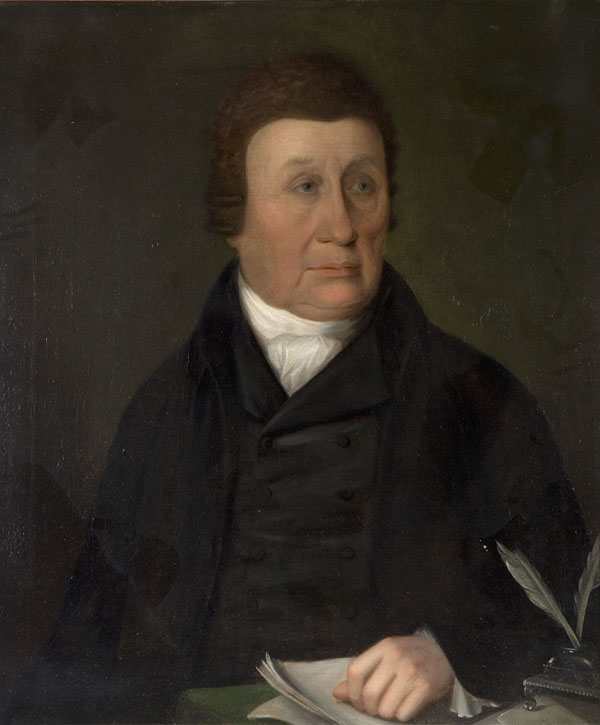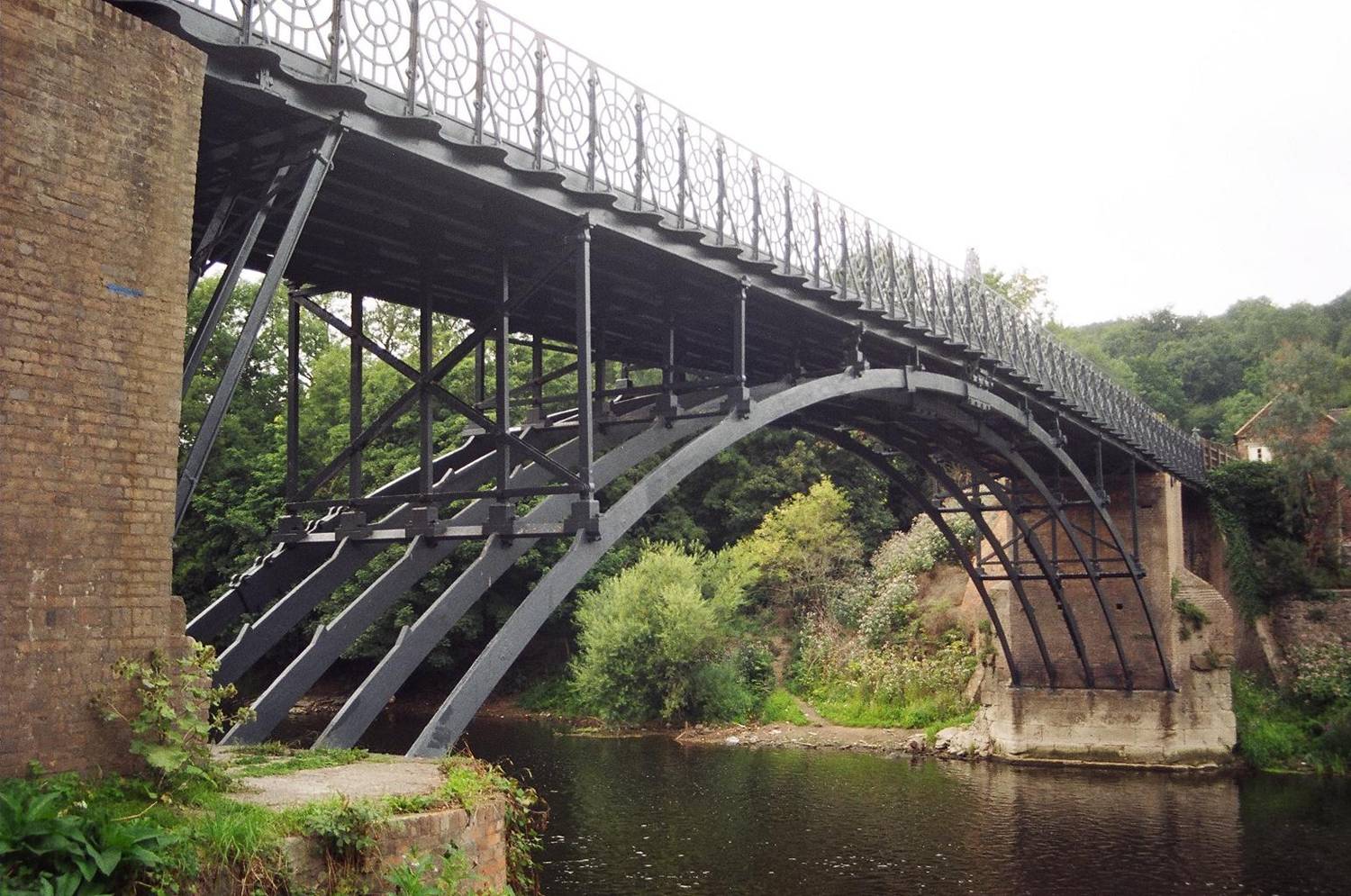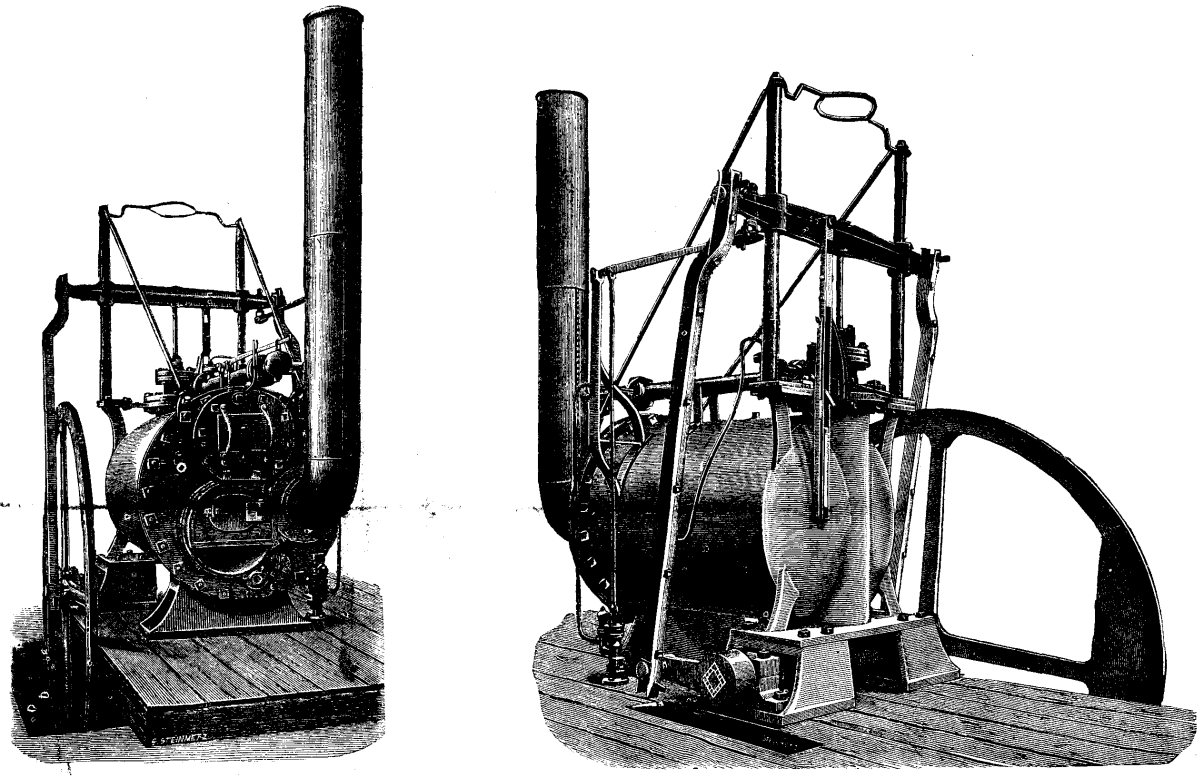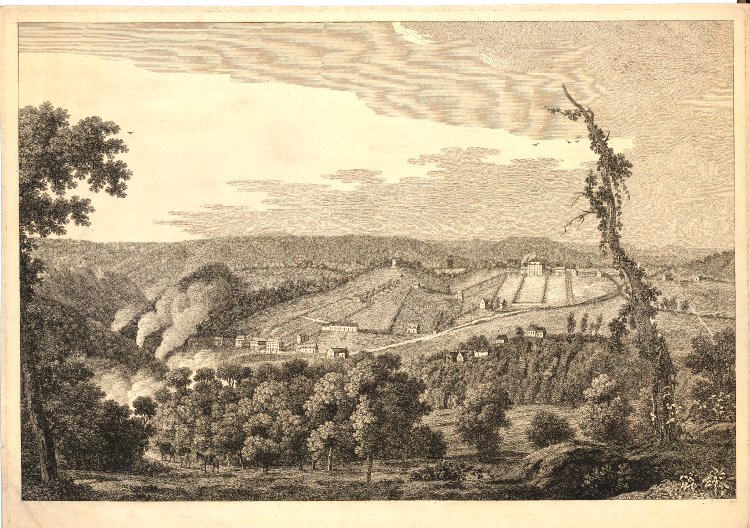|
William Reynolds (industrialist)
William Reynolds (14 April 1758 – 3 June 1803) was an ironmaster and a partner in the ironworks in Coalbrookdale in Shropshire, England. He was interested in advances in science and industry, and invented the inclined plane for canals. Early life He was born at Bank House in Ketley near Coalbrookdale, son of Richard Reynolds who was in charge of Abraham Darby II's ironworks at Ketley. Around 1777 he took over the management of the works there.''The Coalbrookdale Ironworks: a short history''. Ironbridge Gorge Museum Trust, 1975. William Reynolds's education included some time studying with the physician and chemist Joseph Black. Reynolds during his life maintained his interest in many branches of science, including chemistry, geology and mineralogy, and he had a laboratory at his home Bank House, at Ketley Bank. He was interested in the application of science in industry. With Abraham Darby he built under licence several Boulton and Watt steam engines, an early type of steam ... [...More Info...] [...Related Items...] OR: [Wikipedia] [Google] [Baidu] |
Ironmaster
An ironmaster is the manager, and usually owner, of a forge or blast furnace for the processing of iron. It is a term mainly associated with the period of the Industrial Revolution, especially in Great Britain. The ironmaster was usually a large scale entrepreneur and thus an important member of a community. He would have a large country house or mansion as his residence. The organization of operations surrounding the smelting, refining and casting of iron was labour-intensive, and so there would be numerous workers reliant on the furnace works. There were ironmasters (possibly not called such) from the 17th century onwards, but they became more prominent with the great expansion in the British iron industry during the Industrial Revolution. 17th century ironmasters (examples) An early ironmaster was John Winter (Royalist), John Winter (about 1600–1676) who owned substantial holdings in the Forest of Dean. During the English Civil War he cast cannons for Charles I of England ... [...More Info...] [...Related Items...] OR: [Wikipedia] [Google] [Baidu] |
Thomas Telford
Thomas Telford FRS, FRSE, (9 August 1757 – 2 September 1834) was a Scottish civil engineer. After establishing himself as an engineer of road and canal projects in Shropshire, he designed numerous infrastructure projects in his native Scotland, as well as harbours and tunnels. Such was his reputation as a prolific designer of highways and related bridges, he was dubbed ''The Colossus of Roads'' (a pun on the Colossus of Rhodes), and, reflecting his command of all types of civil engineering in the early 19th century, he was elected as the first President of the Institution of Civil Engineers, a post he held for 14 years until his death. The town of Telford in Shropshire was named after him. Early career Telford was born on 9 August 1757, at Glendinning, a hill farm east of Eskdalemuir Kirk, in the rural parish of Westerkirk, in Eskdale, Dumfriesshire. His father John Telford, a shepherd, died soon after Thomas was born. Thomas was raised in poverty by his mother Janet Jac ... [...More Info...] [...Related Items...] OR: [Wikipedia] [Google] [Baidu] |
Tar Tunnel
The Tar Tunnel is an abandoned tunnel located on the north bank of the River Severn in the Ironbridge Gorge at Coalport, England. It is one of ten Ironbridge Gorge Museums attractions administered by the Ironbridge Gorge Museum Trust. Miners struck a gushing spring of natural bitumen, a black treacle-like substance, when digging a canal tunnel for the Coalport Canal in 1787, or else digging a level in search of coal. The plan, proposed by William Reynolds, was to connect the canal alongside the River Severn to the lower galleries of the mines below the Blists Hill area. After digging around into the hill the canal project was abandoned in favour of bitumen extraction. The tunnel was a great curiosity in the eighteenth century and bitumen still oozes gently from the brick walls today. Bitumen's chief commercial use at the time was to treat and weatherproof ropes and caulk wooden ships, but small amounts were processed and bottled as 'Betton's British Oil', a panacea ... [...More Info...] [...Related Items...] OR: [Wikipedia] [Google] [Baidu] |
Hay Inclined Plane
The Hay Inclined Plane is a canal inclined plane in the Ironbridge Gorge in Shropshire, with a height of . It was located at the end of the Shropshire Canal, part of a network of canals that linked the industrial region of east Shropshire with the River Severn. The inclined plane was in operation from 1793 to 1894. It can be visited as part of the Blists Hill Victorian Town and is also a waypoint on the South Telford Heritage Trail. History The proprietors of the Shropshire Canal held a competition in 1788 to find the best means of raising and lowering heavy weights between the canal and the river Severn. They selected a design by Henry Williams and James Loudon, which was also used at a number of other inclined planes in east Shropshire. Construction of the Hay inclined plane was completed in 1793. By 1820 it was in poor condition and substantial repairs were needed. Further repairs were also carried out in the 1840s.Ironbridge Gorge Museum information boards In 1857 the Hay ... [...More Info...] [...Related Items...] OR: [Wikipedia] [Google] [Baidu] |
Coalport
Coalport is a village in Shropshire, England. It is located on the River Severn in the Ironbridge Gorge, a mile downstream of Ironbridge. It lies predominantly on the north bank of the river; on the other side is Jackfield. The settlement was planned as a canal–river interchange and a complete "new town" by ironmaster William Reynolds, who between 1788 and 1796 built warehouses, workshops, factories and workers' accommodation in Coalport. He also directed the construction of the Shropshire Canal, linking the East Shropshire Coalfield with the River Severn — the terminus being Coalport Wharf between the Brewery Inn and Coalport Bridge. Coalport at this time was much larger than it is today. It forms part of the civil parish of the Gorge and is the southeastern corner of the borough of Telford and Wrekin. Cast iron bridge The Coalport Bridge of cast iron was built in 1818 and unlike its even more famous neighbour at Ironbridge, still takes vehicular traffic, albeit li ... [...More Info...] [...Related Items...] OR: [Wikipedia] [Google] [Baidu] |
Broseley
Broseley is a market town in Shropshire, England, with a population of 4,929 at the 2011 Census and an estimate of 5,022 in 2019. The River Severn flows to its north and east. The first The Iron Bridge, iron bridge in the world was built in 1779 across the Severn, linking Broseley with Coalbrookdale and Madeley, Shropshire, Madeley. This contributed to the Industrial Revolution, early industrial development in the Ironbridge Gorge, which is now part of a World Heritage Site. History There was a settlement existing in 1086, listed as Bosle in the Domesday Book of that year, when it lay in the Hundred of Alnodestreu. That jurisdiction was dismembered in the time of King Henry I of England, Henry I, when Broseley and Willey, Shropshire, Willey were reassigned to the Munslow (hundred), Munslow Hundred. Finally they were transferred to the Liberty of Wenlock on its creation in the time of King Richard I of England, Richard I. The place name appears as ''Burewardeslega'' in 1177, and ... [...More Info...] [...Related Items...] OR: [Wikipedia] [Google] [Baidu] |
Pounds Per Square Inch
The pound per square inch or, more accurately, pound-force per square inch (symbol: lbf/in2; abbreviation: psi) is a unit of pressure or of stress based on avoirdupois units. It is the pressure resulting from a force of one pound-force applied to an area of one square inch. In SI units, 1 psi is approximately equal to 6895 Pa. Pounds per square inch absolute (psia) is used to make it clear that the pressure is relative to a vacuum rather than the ambient atmospheric pressure. Since atmospheric pressure at sea level is around , this will be added to any pressure reading made in air at sea level. The converse is pounds per square inch gauge (psig), indicating that the pressure is relative to atmospheric pressure. For example, a bicycle tire pumped up to 65 psig in a local atmospheric pressure at sea level (14.7 psi) will have a pressure of 79.7 psia (14.7 psi + 65 psi). When gauge pressure is referenced to something other than ambient atmospheric pressure, then the u ... [...More Info...] [...Related Items...] OR: [Wikipedia] [Google] [Baidu] |
Richard Trevithick
Richard Trevithick (13 April 1771 – 22 April 1833) was a British inventor and mining engineer. The son of a mining captain, and born in the mining heartland of Cornwall, Trevithick was immersed in mining and engineering from an early age. He was an early pioneer of steam-powered road and rail transport, and his most significant contributions were the development of the first high-pressure steam engine and the first working railway steam locomotive. The world's first locomotive-hauled railway journey took place on 21 February 1804, when Trevithick's unnamed steam locomotive hauled a train along the tramway of the Penydarren Ironworks, in Merthyr Tydfil, Wales. Turning his interests abroad Trevithick also worked as a mining consultant in Peru and later explored parts of Costa Rica. Throughout his professional career he went through many ups and downs and at one point faced financial ruin, also suffering from the strong rivalry of many mining and steam engineers of the day. Durin ... [...More Info...] [...Related Items...] OR: [Wikipedia] [Google] [Baidu] |
Coalbrookdale Loco
Coalbrookdale is a village in the Ironbridge Gorge in Shropshire, England, containing a settlement of great significance in the history of iron ore smelting. It lies within the civil parish called the Gorge. This is where iron ore was first smelted by Abraham Darby using easily mined "coking coal". The coal was drawn from drift mines in the sides of the valley. As it contained far fewer impurities than normal coal, the iron it produced was of a superior quality. Along with many other industrial developments that were going on in other parts of the country, this discovery was a major factor in the growing industrialisation of Britain, which was to become known as the Industrial Revolution. Today, Coalbrookdale is home to the Ironbridge Institute, a partnership between the University of Birmingham and the Ironbridge Gorge Museum Trust offering postgraduate and professional development courses in heritage. Before Abraham Darby Before the Dissolution of the Monasteries, Madeley a ... [...More Info...] [...Related Items...] OR: [Wikipedia] [Google] [Baidu] |
Pontcysyllte Aqueduct
The Pontcysyllte Aqueduct (; cy, Traphont Ddŵr Pontcysyllte) is a navigable aqueduct that carries the Llangollen Canal across the River Dee in the Vale of Llangollen in northeast Wales. The 18-arched stone and cast iron structure is for use by narrowboats and was completed in 1805 having taken ten years to design and build. It is 12 ft (3.7 metres) wide and is the longest aqueduct in Great Britain and the highest canal aqueduct in the world. A footpath runs alongside the watercourse on one side. The aqueduct was to have been a key part of the central section of the proposed Ellesmere Canal, an industrial waterway that would have created a commercial link between the River Severn at Shrewsbury and the Port of Liverpool on the River Mersey. Although a less expensive construction course was surveyed further to the east, the westerly high-ground route across the Vale of Llangollen was preferred because it would have taken the canal through the mineral-rich coalfields of Nort ... [...More Info...] [...Related Items...] OR: [Wikipedia] [Google] [Baidu] |
Longdon-on-Tern
Longdon-Upon-Tern (also known as Longdon-on-Tern or colloquially Longdon) is a village in east central Shropshire, England. It is in the unitary district of Telford and Wrekin, and is approximately east of Shrewsbury and north-west of Telford. Longdon-Upon-Tern is situated on the River Tern, a tributary of the River Severn. Settled since at least the Normans, the village is notable as the site of the Longdon-on-Tern Aqueduct, the first large-scale cast iron navigable aqueduct, designed and built by Thomas Telford for the canal. The aqueduct is Grade I listed and a preserved as a scheduled ancient monument. History The name Longdon is derived from two Old English words, ''lang'' and ''dūn,'' meaning ''long hill''. A settlement at Longdon-Upon-Tern dates to at least the Normans, as it is mentioned in the Domesday Book of 1086 as ''Languedune'', held by St. Alkmund's Church, Shrewsbury. It continued with the church until the 12th century when it passed to Lilleshall Abbey ... [...More Info...] [...Related Items...] OR: [Wikipedia] [Google] [Baidu] |
River Tern
The Indian river tern or just river tern (''Sterna aurantia'') is a tern in the family Laridae. It is a resident breeder along inland rivers from Iran east into the Indian Subcontinent and further to Myanmar to Thailand, where it is uncommon. Unlike most ''Sterna'' terns, it is almost exclusively found on freshwater, rarely venturing even to tidal creeks. This species breeds from March to May in colonies in less accessible areas such as sandbanks in rivers. It nests in a ground scrape, often on bare rock or sand, and lays three greenish-grey to buff eggs, which are blotched and streaked with brown. This is a medium-sized tern, 38–43 cm long with dark grey upperparts, white underparts, a forked tail with long flexible streamers, and long pointed wings. The bill is yellow and the legs red. It has a black cap in breeding plumage. In the winter the cap is greyish white, flecked and streaked with black, there is a dark mask through the eye, and the tip of the bill becomes ... [...More Info...] [...Related Items...] OR: [Wikipedia] [Google] [Baidu] |


.jpg)







-_Immatures_W_IMG_9725.jpg)